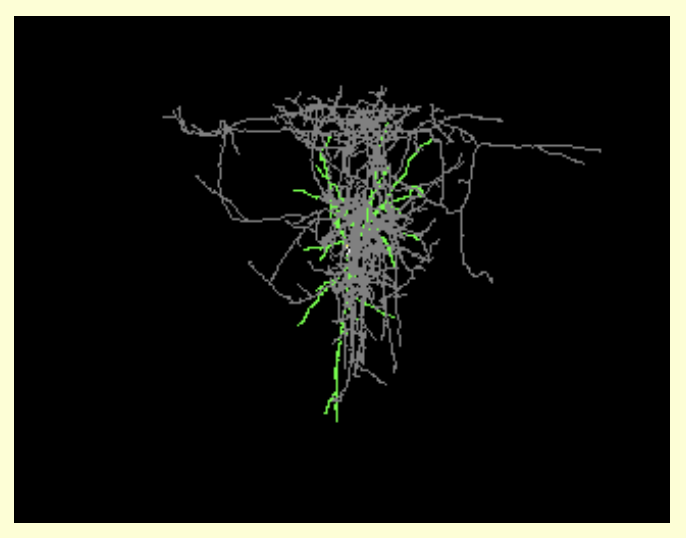Proper Citation: neuromice (RRID:SCR_002993)
Description: THIS RESOURCE IS NO LONGER IN SERVICE, documented on January 08, 2013. A consortium of three facilities whose purpose is to establish, characterize, and distribute novel mutant mouse models with neural and/or behavioral phenotypes, and distribute them to the worldwide research community. Interested scientists are able to obtain information about mouse lines at all three sites in a single unified database. GOALS * Increase genomic and genetic tools for functional gene identification * Provide mice with mutations that alter the nervous system or behavior * Build collaborations between geneticists and neuroscientists The consortium is made up of three mutagenesis and phenotypic screening facilities, focused on identifying alterations in nervous system function and behavior, and established by NIH. They are the Neurogenomics Project at Northwestern University, the Neuroscience Mutagenesis Facility at The Jackson Laboratory, and the Neuromutagenesis Project of the Tennessee Mouse Genome Consortium. The NIH Neurogenomics Project at Northwestern University is directed by Dr. Joseph S. Takahashi, who also acts as the Director of the Neuromice.org consortium. Chemical mutagenesis is used to induce mutations throughout the genome and combined with phenotypic screens to detect mice with mutations. In order to maximize the genomic coverage and recover both dominant and recessive mutations, a dominant G1 screen and a recessive G3 screen are utilized. Phenotypic screens focus on five primary domains: learning and memory, behavioral responses to stress, responses to psychostimulants, circadian rhythmicity, and vision. The Neuroscience Mutagenesis Facility at the Jackson Laboratory is directed by Dr. Wayne N. Frankel. The Neuroscience Mutagenesis Facility is using a three-generation backcross breeding scheme to produce homozygous mutants and will thus recover dominant, semidominant, and recessive mutations. In addition, some mutagenesis will be done in ES cells followed by two generations of breeding. Phenotypic screens focus on identifying mutations affecting: motor function, seizure threshold, hearing, vision, and neurodevelopment. The Neuromutagenesis Project of the Tennessee Mouse Genome Consortium (TMGC) involves researchers throughout the state of Tennessee, under the direction of Dr. Daniel Goldowitz, Ph.D., at the University of Tennessee Health Science Center, Memphis. TMGC also includes researchers at Oak Ridge National Laboratory, Vanderbilt University, Meharry Medical College, University of Tennessee-Knoxville, St. Jude Children's Research Hospital, and the University of Memphis. The Project is using regional mutagenesis, covering regions on chromosomes 10, 14, 15, 19, and X, thus including approximately 15 of the genome in the screened region. Phenotypic screens include: motor and sensory function, learning and memory, neurohistology, aging, alcohol response, abused drug response, visual function, and social behavior. Neuromice.org has stopped taking orders online but mutants are orderable please contact the originating center for availability and pricing details. Live targeted mutant Fragile X model mice are now available for distribution.
Abbreviations: neuromice
Synonyms: neuromice.org
Resource Type: material resource, biomaterial supply resource, organism supplier
Keywords: eye, fragile x syndrome, gene expression phenotype, geneticist, anxiety, ataxia, behavior, b-wave, cocaine, mus, musculoskeletal movement, mutant mouse strain, mutated variant site, mutation, nervous system, nervous system behavior, nervous system function, neuromuscular function, neuroscientist, phenotype, scotopic threshold response, substance-related disorder, tremor, visual perception, mutant, mouse model, neural phenotype, behavioral phenotype, neuron, mutagenesis, learning, memory, stress, psychostimulant, circadian rhythm, vision, motor function, seizure threshold, hearing, neurodevelopment, chromosome, motor function, sensory function, neurohistology, alcohol abuse, drug abuse, visual function, social behavior
Expand Allis listed by |
|
is related to |
|
has parent organization |
|
has parent organization |
We found {{ ctrl2.mentions.total_count }} mentions in open access literature.
We have not found any literature mentions for this resource.
We are searching literature mentions for this resource.
Most recent articles:
{{ mention._source.dc.creators[0].familyName }} {{ mention._source.dc.creators[0].initials }}, et al. ({{ mention._source.dc.publicationYear }}) {{ mention._source.dc.title }} {{ mention._source.dc.publishers[0].name }}, {{ mention._source.dc.publishers[0].volume }}({{ mention._source.dc.publishers[0].issue }}), {{ mention._source.dc.publishers[0].pagination }}. (PMID:{{ mention._id.replace('PMID:', '') }})
A list of researchers who have used the resource and an author search tool
Find mentions based on location

{{ ctrl2.mentions.errors.location }}
A list of researchers who have used the resource and an author search tool. This is available for resources that have literature mentions.
No rating or validation information has been found for neuromice.
No alerts have been found for neuromice.
Source: SciCrunch Registry





